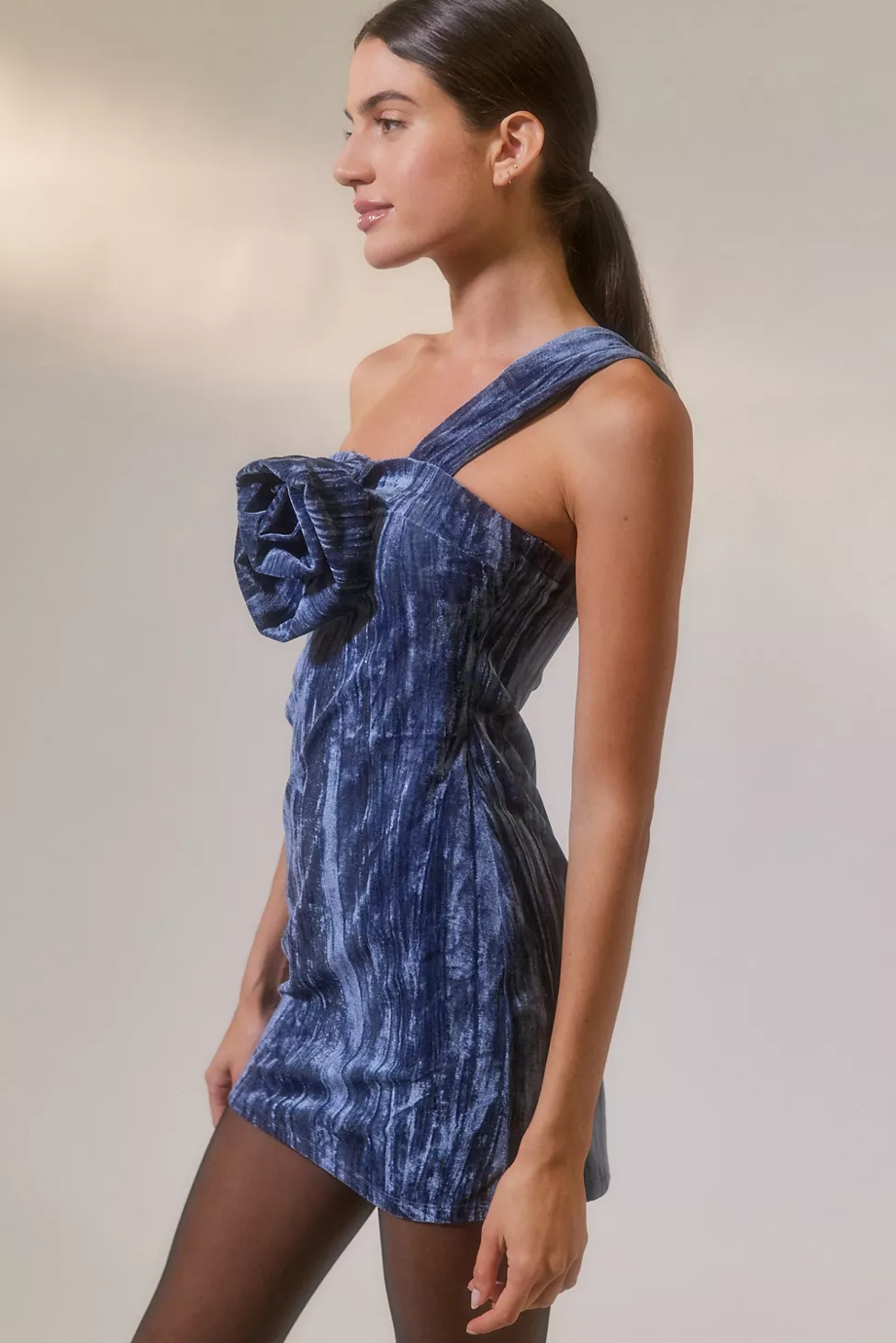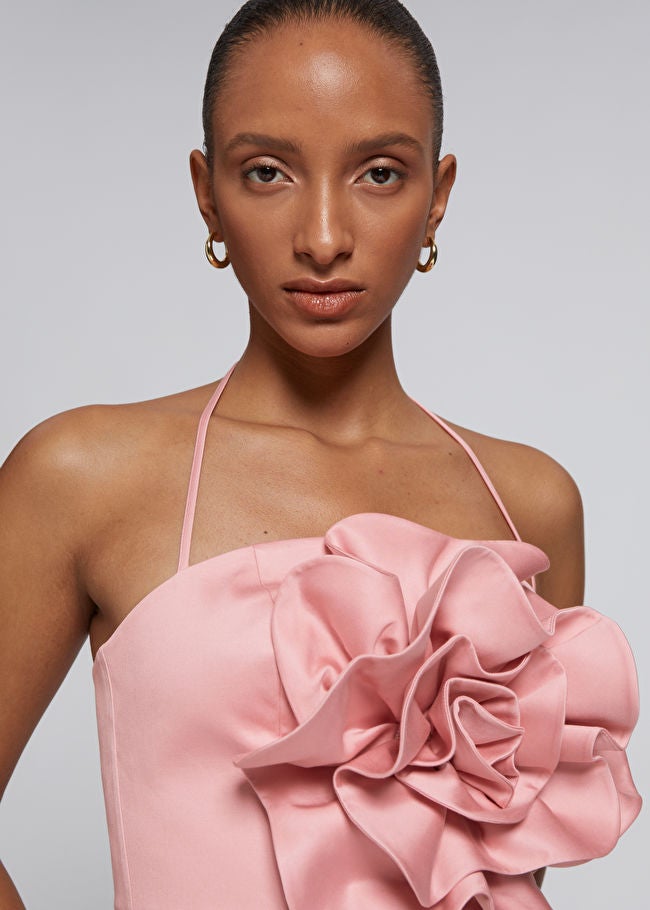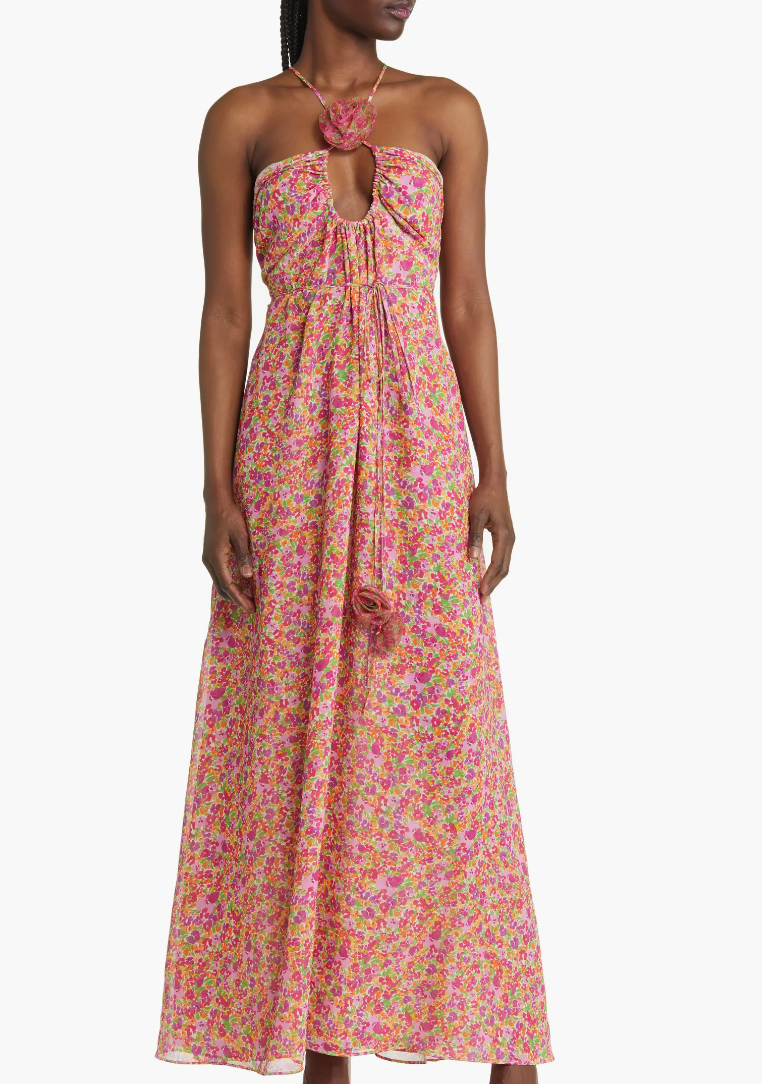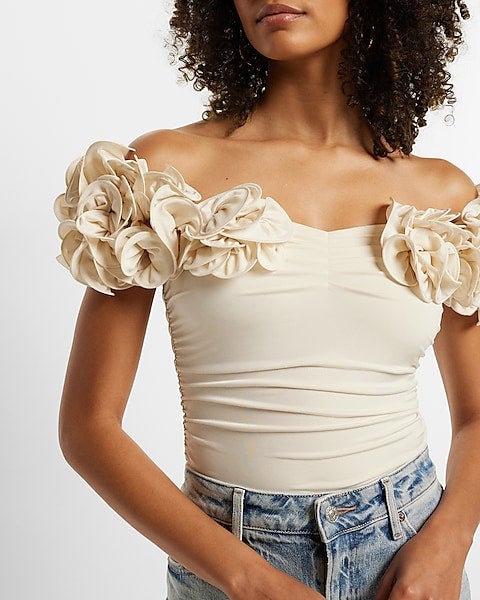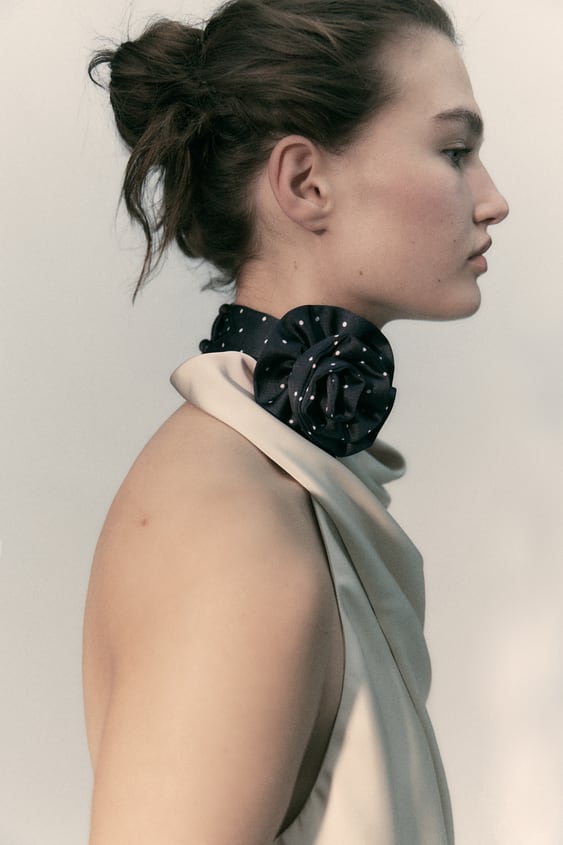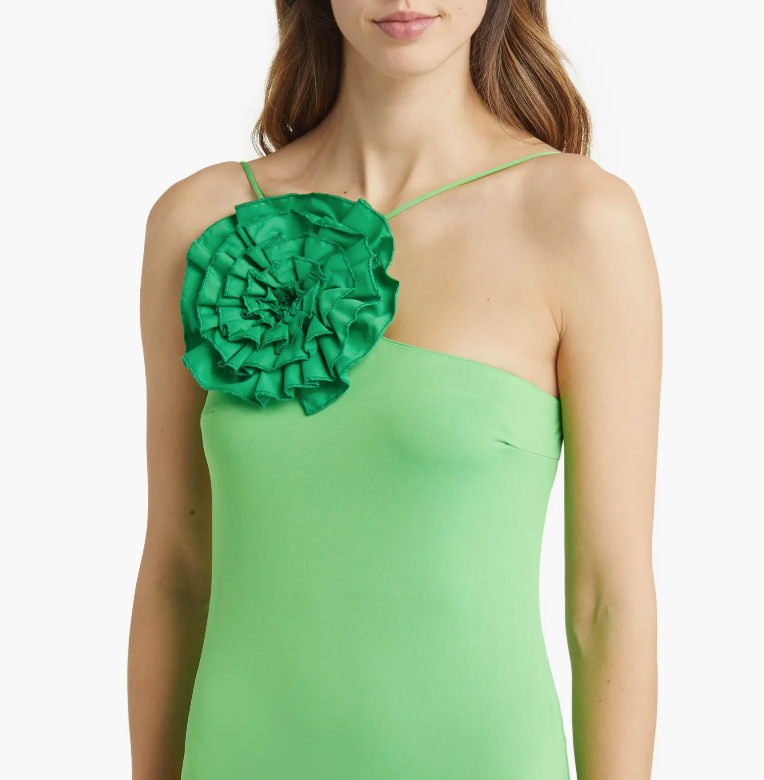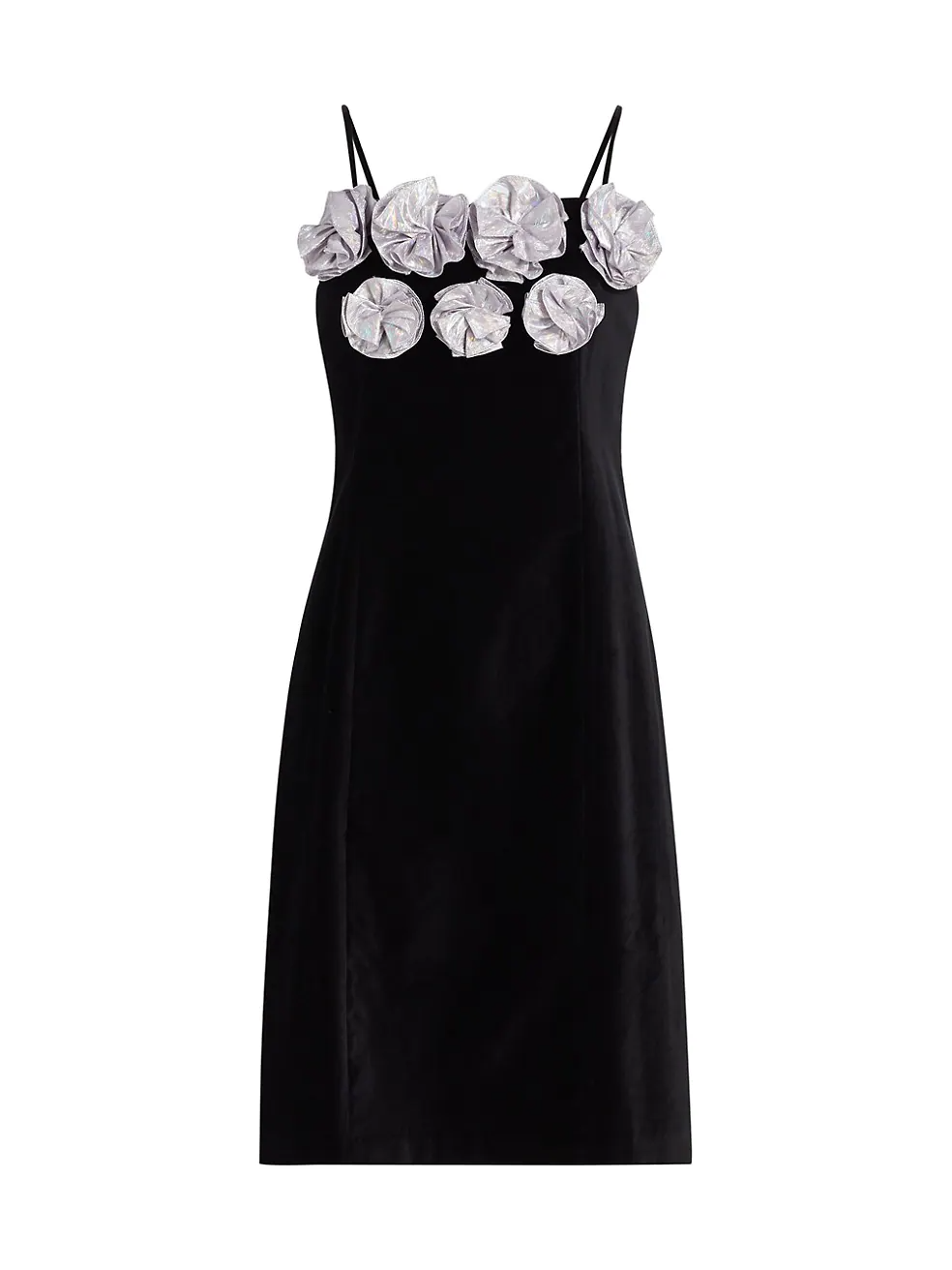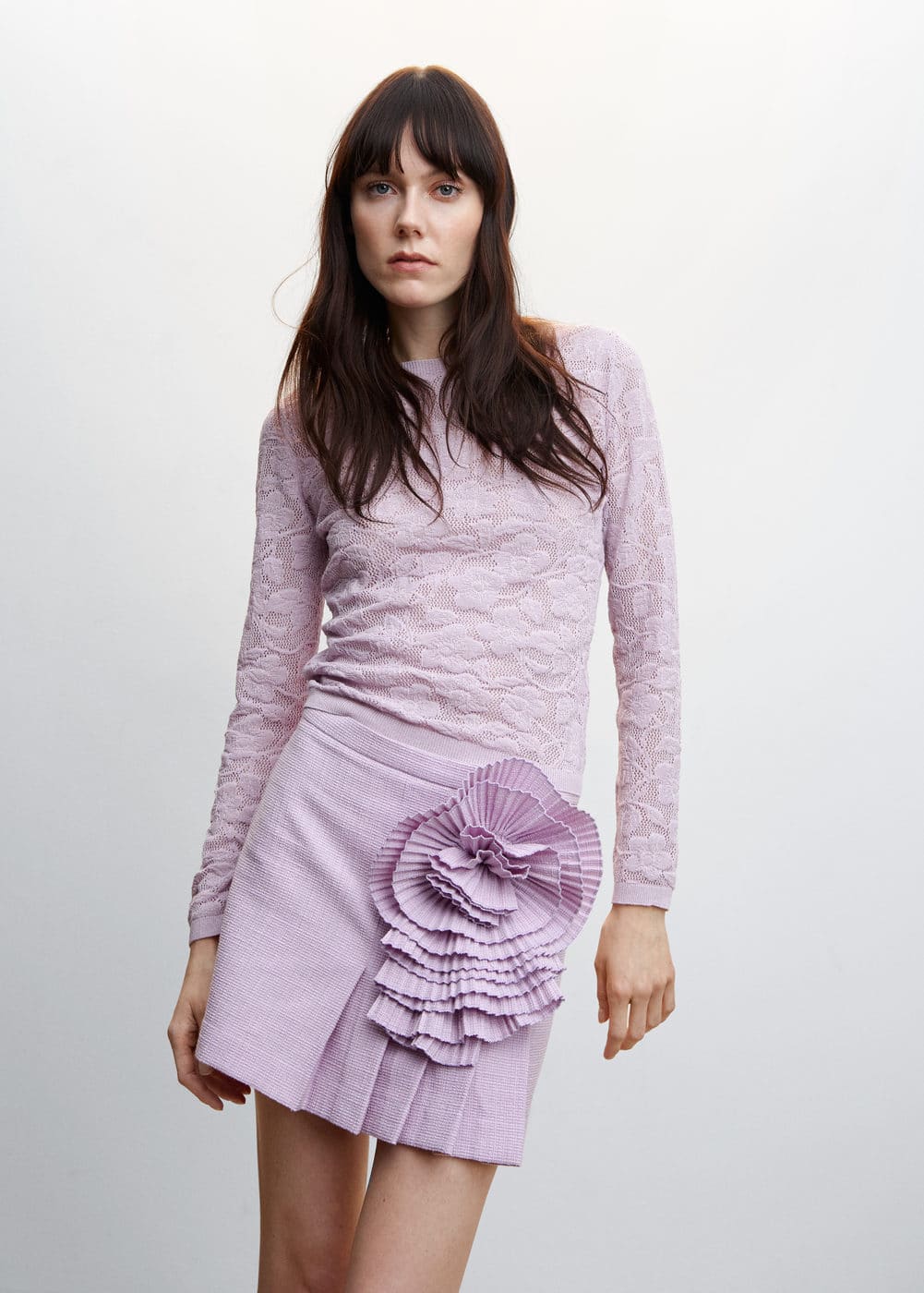Rosette Fashion Is The Latest Y2K Comeback Trend
Photo: Axelle/Bauer-Griffin/FilmMagic.
While previously associated with 18th-century high society, Carrie Bradshaw’s audacious style in the 2000s and blogger aesthetic in the 2010s, the once-kitschy rosettes are having a trend revival.
During New York’s Fall/Winter 2023 season, rose adornments dominated the runways: Christian Siriano’s newest collection featured romantic flower appliques in shades of red, purple and pink on various gowns while avant-garde womenswear label Sandy Liang showed the design on chokers, sashes and frocks. Meanwhile, Puppets And Puppets took a more daring approach, using florals as nipple covers.
Off the runway, the accessory has also been popping up over the past few months. House of the Dragon star Emma D’Arcy wore an Acne Studios ensemble, featuring a small black rosette near the top of their suit jacket, to this year’s Golden Globes. The trend was then spotted on Zendaya, who wore a pink Valentino gown with rosettes cascading down at the SAG Awards. Two weeks later, at the Academy Awards, actresses Halle Berry and Nicole Kidman leaned into the glamor as their rosette-encrusted dresses shined on the red carpet. Most recently, Daisy Jones and the Six’s Camila Morrone wore a rose choker at one of the show’s premieres. Morrone's co-star Suki Waterhouse also donned the trend at the Vanity Fair Oscar Party.
AdvertisementADVERTISEMENT
Photo: Puppets And Puppets
Photo: Sandy Liang
While the design is associated with the early aughts style and prom dresses of the Betsey Johnson era, rosettes have been a part of fashion for a long time. In the 17th century, fabric roses were sewn onto women’s and men’s shoes as decoration and a sign of high social and economic status, according to Summer Anne Lee, a fashion historian and adjunct professor at Wagner College. However, throughout the 18th and 19th centuries, rosettes became increasingly associated with women’s fashion. “[Rosettes] symbolize femininity, love and beauty,” says Lee. “They're associated with this youthful prime of your life. They're also so ephemeral, like all flowers. Having an artificial flower that never dies is something that's very precious to people.”
In 1756, French socialite Madame de Pompadour wore a navy blue Rococo gown, which featured dozens of pink silk rosettes in a portrait painted by popular artist François Boucher. Her look was seen as so impactful that actress Glenn Close wore a replica of the dress in the 1988 period piece Dangerous Liaisons, a salacious film about 18th-century French society (the film’s costume designer, James Acheson, won an Academy Award in 1989 for his work). Lee also points to 20th-century French designer Paul Poiret’s Josephine Dress, created in 1907, as a notable moment in rosette fashion history.
Photo: Jeff Kravitz/FilmMagic.
Photo: Arturo Holmes/Getty Images.
While the design didn’t evolve drastically in the 19th and 20th centuries, appearing on the likes of the British monarchy (see: Princess Diana) and in pop culture (My Fair Lady), in the early aughts, the ruffled motif returned into style favor in a fresh, high-fashion way. Yves Saint Laurent’s Spring/Summer 2003 show featured dainty rosettes on low-cut blouses and mini dresses, while celebrities like Jennifer Lopez and Anne Hathaway donned the floral design on the red carpet.
AdvertisementADVERTISEMENT
But, according to Lee, the biggest source of rosette revival came as a result of one HBO hit series. “There's so many references or connections [to rosettes] being made with Sex and the City and Carrie Bradshaw being a fashion icon. That's something [to note] in this visual rolodex of early 2000s fashion,” says Lee. At the beginning of the millennium, Carrie wore a giant Chanel brooch pin in the second episode of season 3. The floral accessory was said to symbolize the arrival of spring and new love (remember her short-lived romance with the politician?). The look became such a phenomenon and Bradshaw signature that Sarah Jessica Parker even channeled her character with a sheer maxi dress and a magenta rosette tied around her waist with a ribbon at the premiere for the third season.
Photo: Ron Galella, Ltd./Ron Galella Collection/Getty Images.
Today, Lee says the resurgence of the rosette is due to Y2K fashion coming back in style, as well as the emergence of maximalist TikTok-fueled aesthetics like cluttercore and weird girl: “It’s really perfectly suited for what's going on in fashion today, which is such a combination of these social media-fueled micro-trends, but also this current wave of nostalgia for the early 2000s and even 2010s.”
However, this modern re-emergence of the rosette is noteworthy for coming full circle as a gender-neutral accessory. New York designer Willy Chavarria’s Fall 2023 collection featured elevated menswear looks, using the motif in the form of oversized brooches and hair accessories. At the 2023 BRIT Awards, Harry Styles wore a giant black rosette choker in tandem with his Nina Ricci suit. In a more subtle approach, Dwayne Johnson and Paul Mescal elevated their suits with small rosette brooches while attending this year’s Academy Awards.
AdvertisementADVERTISEMENT
Photo: Lionel Hahn/Getty Images.
Photo: Dave J Hogan/Getty Images.
“Something that we've seen so much more in the past few years, is the blurring of the boundaries between menswear and womenswear. As a society we're starting to accept the idea that clothing are inanimate objects that don't have a gender,” says Lee. “The rosette trend could be an example of how something that's seen as more traditionally feminine, can kind of break that boundary, and we can see people of all genders participating in it.”
While Lee says rosettes are a micro-trend, she believes it’s one we’ll likely see time and time again. “When we look at the fashion history, roses have been worn and inspired designers for hundreds of years, if not thousands of years, so roses in fashion are never going to disappear.”
At Refinery29, we’re here to help you navigate this overwhelming world of stuff. All of our market picks are independently selected and curated by the editorial team. All product details reflect the price and availability at the time of publication. If you buy or click on something we link to on our site, Refinery29 may earn commission.
AdvertisementADVERTISEMENT







